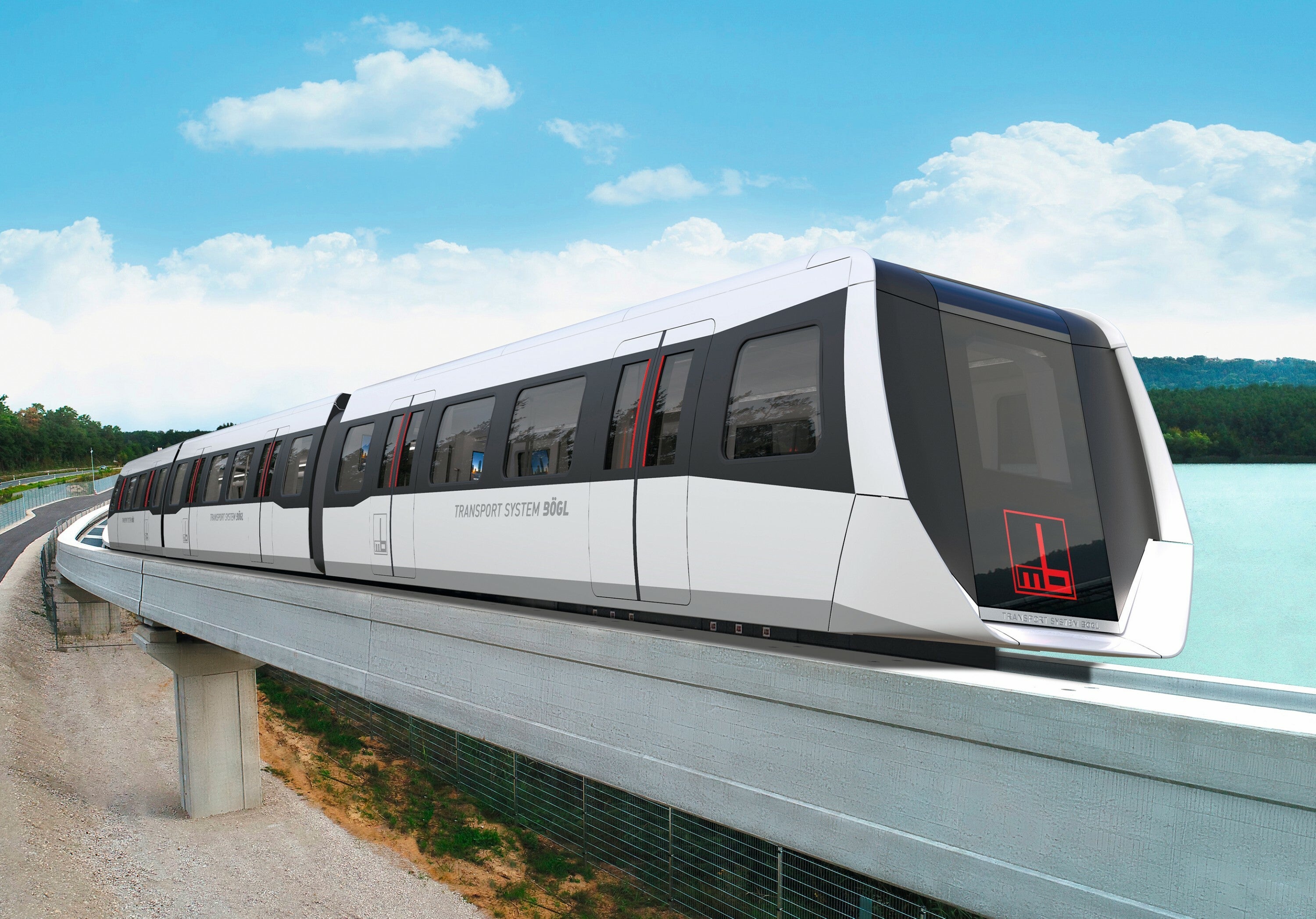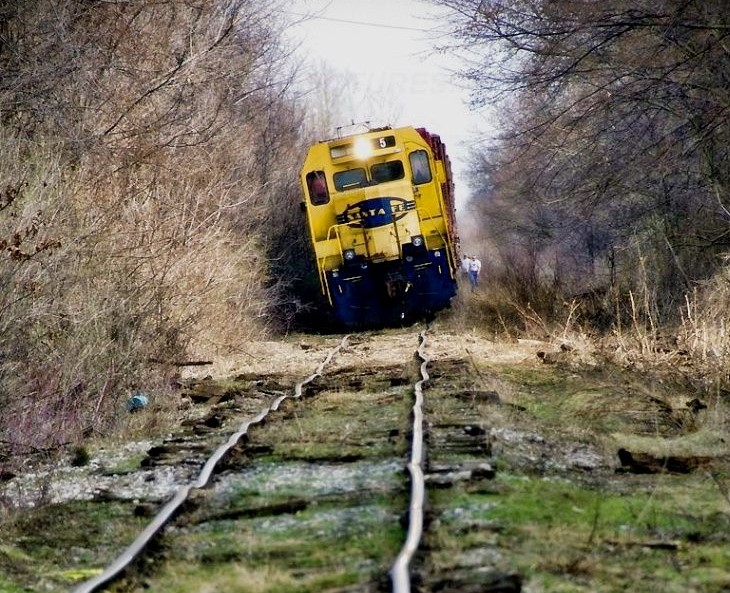By Frédéric de Kemmeter – Railway signalling and freelance copywriter – Suscribe my blog
28/11/2021 – (Version en français)
🟧 Back to homepage 🟧 See our brief news
There is a « natural » tendency to see railway technology as backward, inbred and both resistant and slow to adopt innovations from other industries. In fact, beyond technology, rail however must make a qualitative leap by eliminating the tendency to stifle progress with a mountain of procedure, sometimes jeopardising the progress expected from an innovation.
It is a fact: the electric car has existed for 130 years… through the metro, the tramway and then the electric train. The use of green energy has long since ceased to be a challenge for the railways. Today, trains run at 320 km/h on a regular basis thanks to a overhead suspended more than 5 m above the tracks. Similarly, 3,000-tonne trains are regularly run in Europe with a single electric locomotive, not emitting the thousands of tonnes of CO2 of our American, Brazilian or Australian friends.
The production of electricity must obviously be taken into account, as there is a major difference between countries with a nuclear industry like France and « coal » countries like Germany or Poland.
But the most important issue is not whether the train is greener than its aviation or road competitors. The real issue is the acceleration of technological progress by competitors, boosted by billions in research and development that rail does not have.
According to the European Automobile Manufacturers’ Association (ACEA), we see that the automotive sector is the EU’s number one investor in research and development (R&D), spending €62 billion on innovation per year. In the top ten, we find also the technology Hardware & Equipment and Electronic & Electrical Equipment sectors which spending together more than 27 billion R&D while the Aerospace & Defence sector spending €8 billion. Bad comparisons?
Yes, if we consider that these sectors reach 100% of the population in one way or another, through our household appliances, our smartphones, our consumption but also for our daily travel. It is therefore fatal that the train is only a partial response to our needs, which indicates that it is not in the top 10.
However, this comparison can become meaningful when we take a closer look at how these sectors operate. The first thing is their internationalisation. Aviation and automotive speak one language and share common values across the globe, while competing with each other in terms of their sales networks and products.
In a world where agile development, rapid deployment and unlimited scale are the new normal, many automakers are well on their way of transforming their business culture from legacy metal works to software-driven technology companies. The digitalisation can help automakers succeed in their digital transformation journey.
The sector is strongly supported by a host of small, innovative start-ups, something that the railways are sorely lacking. Armed with a very high level of lobbying, the automotive sector is therefore in the process of asserting its strengths and demonstrating its ability to be one of the solutions for achieving national climate objectives.
There is a great risk that decarbonised automotive solutions will emerge rather than rail. We would then find ourselves in the same situation as in the 1950s, when the railways were relegated to their own little corner while the car spread its new way of life among the population.
It is clear that the railways are operating in a fragmented way and do not always have the resources that aviation and the car have. The fact that it is a form of transport that partly uses green energy (electricity) and that it is guided transport (heavy loads, high speed), means that rail transport must be given a major priority. There are reasons for hope.
A first progress is that the European Union Agency for Railways (ERA) is now Europe’s single certification body for vehicle authorisation, safety certification, and ERTMS trackside approval, replacing the EU’s previous national certification agencies.
The change is intended to simplify processes and reduce administrative costs for the rail industry by providing a ‘one-stop-shop’ for rail manufacturers and international operators, enabling them to seek approval in every member state simultaneously, rather than on a country by country basis.
To obtain the The Single Safety Certificates (SSC) for example, a new form is prescribed by the European Railway Agency (ERA) and is recognised by the national authorities (Common Safety Method). Recently, by this new form, the swiss operator BLS Cargo has granted his SSC for the next five years, with ccoperation with the national authorities of Switzerland, Germany, Austria and Italy, which is a major step forward in the certification of locomotives, a strong demand from rail operators.
This is therefore a progress made possible by the elimination of procedures, which we can find in two other areas.
The first is the installation on board a locomotive of the safety systems necessary to operate in a given group of countries. So far this installation is still very cumbersome and unnecessarily keeps a locomotive in the workshop for days, if not weeks.
To go faster, the Belgian start-up The Signalling Company is trying to develop an on-board « download » (overnight) of a complete security system for a country. This would allow the rented locomotive to be ready for use the next day for a new mission. This download would be provided in the form of an ‘app’ as simple as those on your smartphone. Results are expected in 2022.
It will be especially interesting to see how this innovation is received by the safety organisations.
The second example is ETCS, which has been discussed for 20 years. It is expensive to implement, so these new technologies are not used on the lines that need them most: small lines with low traffic.
The idea of eliminating a maximum of cables and assets to be maintained has produced the concept of fixed virtual blocks (about 5km) combined with the well-tested technology of axle counters in small stations where tracks cross. This ETCS level 3 « regional » is being tested in Italy with a view to writing the technical specifications valid for everyone in Europe. Here too the results are expected soon. The aim is to speed up the implementation of the system and to eliminate the traditional red tape.
All this shows that even if it seems unlikely that the railway will be flooded with billions in research and development in the future, a first demonstration of its efficiency would be to eliminate unnecessary procedures and national egos, and to prove that the innovations mentioned above (there are still other examples), meet the safety criteria just as validly. However, the railways will also need to benefit from an environment of start-ups active in many fields to push back the technological horizon and keep up with other transport.

28/11/2021 – By Frédéric de Kemmeter – Railway signalling and freelance copywriter
Suscribe my blog
Related topics:
 Rebirth of Maglev for urban transports
Rebirth of Maglev for urban transports
11/30/2020 – It was thought that Europe was no longer interested in this technology, but one entrepreneur still believes in it. The German company Max Bögl has designed a Maglev for urban use in Asia.
 Train, hydrogen and the Gartner’s Hype Cycle
Train, hydrogen and the Gartner’s Hype Cycle
04/11/2021 – Since 2018, hydrogen trains are in commercial operation in Germany and are being tested in the Netherlands, France and the UK. They are marketed as ‘green’ because the only emission they produce in operation is steam. No dirty pollution in our cities and in stations. This is exactly what our politicians were looking for to respond to the great climate movement of the moment.
 DB produces 3D printing heavy spare components
DB produces 3D printing heavy spare components
01/29/2020 – 3D printing isn’t new to Deutsche Bahn. The German railway company started indeed to use a 3D printer in 2015. Since then, it has printed more than 7,000 spare parts.
 Is automatic coupling on freight wagon will become reality?
Is automatic coupling on freight wagon will become reality?
09/07/2020 – Europe is finally testing an automatic coupling for its freight trains. But now with digital attributes. This coupling will make it possible to operate « intelligent trains »
 Sustainable railways mean infrastructure works !
Sustainable railways mean infrastructure works !
16/11/2020 – 2021 has been designated European Year of Rail. This means not only modern trains but also good railway infrastructures. Some people believe that this is not always necessary. Really?


Vous devez être connecté pour poster un commentaire.